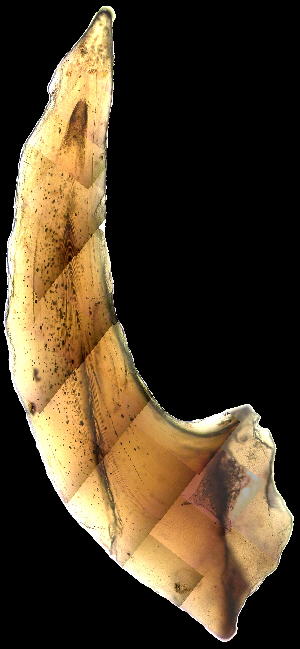2. Laminar Structure of Conodonts
Go back to Analysis: Research In Progress
Conodonts were named after the "nested cone" structure of the tooth elements.
Under a light microscope, high magnification images show an intriguing
laminar organization that suggests the tooth was created by successively
adding new layers to the outside of the tooth as it grew -- like tree rings
left by the enlarging bark of a tree trunk. When damage to the conodont
occurred by wear and tear, new layers would rebuild the conodont and enable
its continued growth. It may be possible to obtain some clues
about the rate of the conodont's growth by measuring the distance traveled
by each growth cone along the axis of growth. To test this possibility,
a large element was photographed by a high resolution mosaic of images,
and the triangulated pixel distances from tip to tip of each cone were
computed and the rate of growth were graphed, creating the following figures.


Click on Image to view a large
712 KB image of photo mosaic
Conclusion: growth cone spacing shows linear increase in size until
a certain point where growth size appears to flatten out and grow less
predictable. However, these spacings are not necessarily correlate
to rate of growth, as some portion of the lamina appear to be resorbed
or reworked. For some close-ups of some of the structures, refer
to AB02E14.
Page established 7-7-99, updated 7-7-99 -- copyright Jim Davison
Go back to: Analysis: Research In Progress--
Please mail comments or suggestions to: My E-Mail
Address

